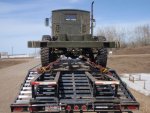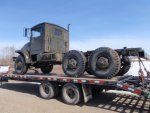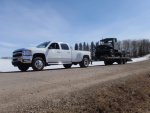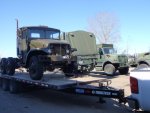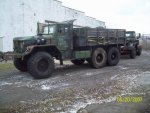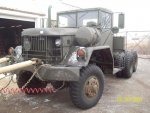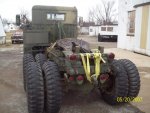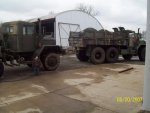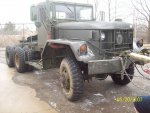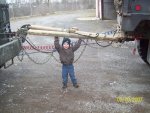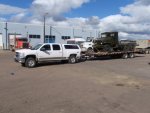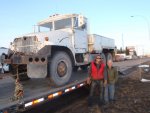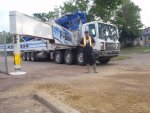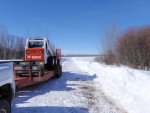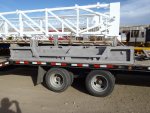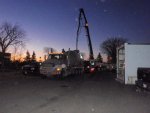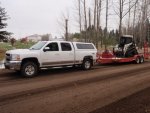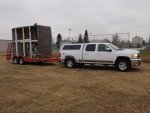Estimating vehicle weight distribution
Without a scale how do I figure out if I have propper tongue weight?
I dislike the guess word but until it's scaled.....it's all you have.
Who has scaled a Ferret and knows the actual axle weights?
Looking at it....and from a design perspective, it should be very close to equal front and rear.....but that's just a guess.
Knowing the over-all weight of the ferret at 3.7 tonne
Ferret armoured car - Wikipedia, the free encyclopedia It's lighter then my lightest 'skid steer' at 3.8 tonne.
Estimating weight distribution would take things into consideration like......steel or aluminum engine, turret placement, armor, and maybe even fuel. 200 gallons is almost a ton.
While driving onto the trailer there is a point when the entire load is over the axles. On a couple of my trailers that is the point where I can lift the pintle off the hitch, by hand, with 8000 lbs sitting on the trailer.
As the load moves forward on the trailer, the 'sag' on the towing vehicle begins to become apparent. Ideally you pull forward until approx. 10% of the load is on the tongue. That will visibly push the back of the truck down (approx. 1" on my duramax) and should give you about 800 lbs of tongue weight plus the trailer tongue weight. So in the case of the 12' ferret....and aSSuming even weight of both axles, stop once the front of the Ferret is approx. 4.5 feet ahead of the front axle.
You should know that while laying out all the info, I am sleep deprived and this is a guideline to be followed without me having any responsibility or knowledge of what I say.

It's good you're doing the homework. My 'opinion' is based on regulations and experience and that does not always make it right....only right for me.
The first symptom of 'load too far back' can happen over 30mph but usually waits until you're doing 50mph. You'll notice a slight pull on the steering wheel left to right and within seconds.........well, you saw the video. It only happened to me once and it happened at 60mph. We were hauling an awkward 3000 lb 1960's horse drawn milk wagon. At the first, slight pull of the steering wheel, I grabbed the brake controller and had "pre-set" the strength at 80%. It was in full 'sway mode' within seconds. The brakes grabbed square and even, I was sure not to "over-steer" to correct it and embarrassingly wiggled my load to the shoulder in front of a pile of shocked, quality drivers. I did not need to clean my shorts for I am a professional....tight a$$.
If this happens to you, grabbing the brake controller switch and applying "trailer brakes only' MAY allow you to get control again. Once in control apply truck brakes. Hammering on truck brakes without having a controller properly set up (or without a delay setting for trailer) will jam that load through your truck. Practise 'blindly' reaching for the brake controller....after you have pre-set your trailer brake load (usually on side of controller) so you can feel them slightly grab while lightly depressing vehicle's brake pedal.
The best case is that after the load is on, the truck and trailer are running flat and parallel to the ground. My hitches are all at 21" off the ground with most trailers slightly higher at the front when empty. When loaded, my trucks and trailers normally sit 'flat' like a lake.
Fly me down, feed and house me and I'll do the leg work. I pulled my first load in 1981 and haven't killed anyone or flipped a load yet.......I GUESS the day is early.
The last picture is staged to show what NOT to do.



